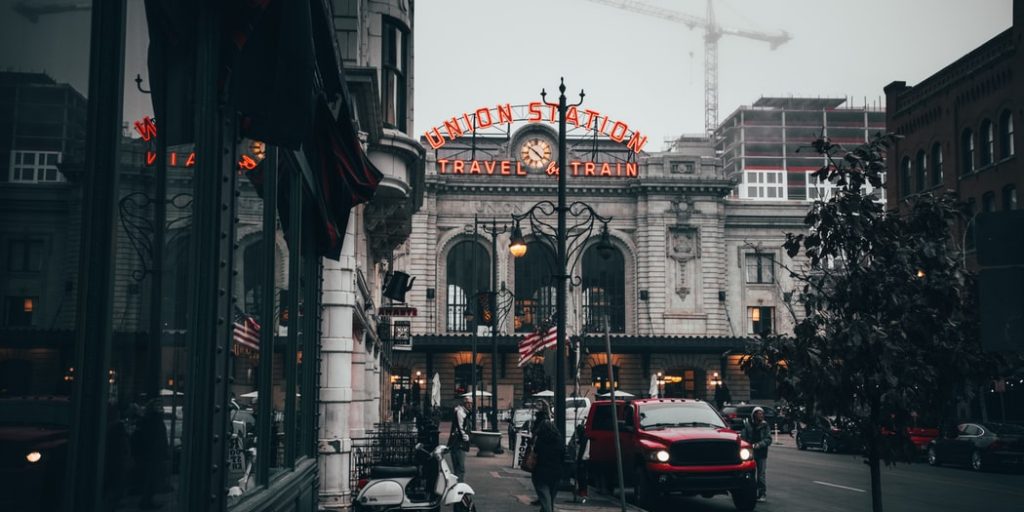Denver anticipates autonomous vehicles with cross-agency, cross-sector collaborative planning
Without early planning by regulators, autonomous vehicles (AVs) have the potential to fail on their promises of safer and more convenient travel.
Before and even during the pandemic, which has understandably shifted priorities of local and state officials, leaders in AV policy development are nonetheless thinking about and producing plans to deal with hundreds of interrelated issues. These plans include:
- How to replace lost revenue from decreased parking and fewer traffic violations
- How to update outdated or obsolete zoning codes
- How to centralize and automate infrastructure such as traffic lights and permit the AVs to communicate with each other and their surroundings
- How to share and protect massive amounts of personal data of riders
- How to increase public awareness and buy-in of technology that many people fear or do not understand
- How to address land values with more space coming into the market from unused parking lots, as well as contemplating re-adaptive uses for those properties
- How to design and assert the responsibilities of local, state and federal regulators
- How to handle job losses that will be experienced by bus and taxi drivers
- How to address issues that affect cities differently than suburban and rural areas
- How to handle surges to the electrical grid when a majority of vehicles rely on it
One city effectively navigating cross-agency and public/private policy planning and development is Denver. In 2019, the Colorado Department of Transportation collaborated with three other Denver agencies, each of which also worked with transportation and thought leaders from the public, private, and nonprofit sectors to create their Mobility Choice Blueprint. The Mobility Choice Blueprint begins from the same premise as the playbooks of other leaders in AV policy such as Seattle and Los Angeles: that the pace of innovation and adoption of new transportation technologies are “disruptive forces that affect quality of life,” and if left unchecked, they have the potential to worsen conditions. These include (i) delay or failure of promised safety benefits of connected vehicles due to mismatched systems, and (ii) new options of mobility restricted to few segments of the population instead of improving equitable access.
Denver’s regulators predict that with limited or uncoordinated efforts to prepare, crashes could increase by 50% by 2030. But with a proactive approach, there could be 8,200 fewer crashes per year saving both thousands of lives and $550,000,000 for the city and its citizens. Similarly, without planning, the number of people who have no ready access to a vehicle could increase by 18,000 by 2030. However, utilizing the blueprint could give 91,000 people who would otherwise face mobility challenges a new range of travel options. Disabled or senior citizens are sometimes stifled by limited access to vehicles tailored for their particular disabilities or health issues. Low-income individuals, families without bank accounts, and slow adopters of technology may be unable to use app-based services like Uber or Lyft, and are thus reliant on inflexible public transportation. Others who live far from downtown also must deal with fixed bus and light rail routes and schedules.
Denver officials have launched early versions of mobile ticketing and payment app to transition from a “ticket-based” travel to “account-based business.” In anticipation of AVs, users will eventually subscribe to the full range of travel options and integrated trip planning as a monthly service. The inclusion of all ride options in a person’s account for each trip segment will offer a more seamless trip experience.
With real-time information about all travel mode options and costs provided by trip planning tools, travelers will gain confidence in the transportation system, which could lead to choosing “multimodal” trips over using a personal automobile. One app would show where the closest bike is, find a shared AV to take the user across town, reserve a scooter once the user arrives at the destination’s transit hub, and pay for everything with one click, despite having different companies/agencies providing these services. Recognizing the limited ability of those without bank accounts or smart phones to benefit from these services, officials hold workshops and have conversations with companies on how to include both traditional and new methods of accessing information and payment options.
Public officials emphasize that without a relationship to public objectives and close coordination with the companies building the technology, the private sector could focus on maximizing revenues at the expense of community goals, leaving many of these segments of society behind. By 2019, they had worked with more than 1,000 participants in digital surveys, held workshops with 40 ambassadors representing economic development organizations as well as advocates for the disabled and elderly populations, and hosted more than 70 events to educate and provide opportunities for feedback about the blueprint. For example, through workshops with advocacy groups, they have developed incentives for accessibility-equipped shared AVs that can provide transportation for people with disabilities at a lower cost than a medi-van.
Permitting private companies to continue to build and improve AVs without community and government input risks isolating members of the society that are most susceptible to changes in city transit, or more broadly, fails to account for the breadth of issues and areas of life AVs will change. As Denver officials demonstrate, a regional, interagency, cross-industry collaboration is a crucial first step in developing infrastructure that grants benefits to all.
Brandon Brauer is an attorney at Saul Ewing Arnstein & Lehr LLP in Washington, DC. Brauer’s practice focuses primarily on commercial real estate transactions, including leases, purchases, sales, joint ventures, financings, condominium regimes, construction, and corporate mergers and acquisitions.




















